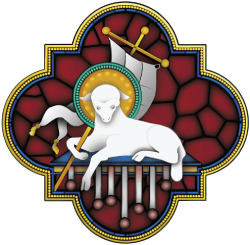The Pauli Murray Center for History and Social Justice, which honors the life and work of the civil rights activist who became the first Black woman ordained as a priest of the Episcopal Church, will host a grand opening of its interior exhibit space on September 7. The center, located in Murray’s childhood home in Durham, North Carolina, contains exhibits about her life and provides space for community and social-justice programs.
“It has been a decade-long journey,” said Angela Thorpe Mason, the center’s executive director. The house was slated for demolition in the early 2000s, and was in extremely bad shape. A group of local advocates rallied to save it. The Pauli Murray Center was established in 2012, but the rehabilitation wasn’t complete until this April.
Murray’s grandfather, Robert Fitzgerald, built the house in 1898, and Murray moved there to live with her grandparents and two aunts in 1914, at the age of 3. Her aunt sold the house in 1953, but Murray visited it even after it had been sold and felt a deep connection to it. One reason the rehabilitation took so long was a desire to restore its early 20th-century state as much as possible, using historic construction techniques.
This is not, however, a historic house museum full of period furniture. It’s also not a shrine full of altars and reliquaries. Murray’s typewriter will be on display, as will her writing, and there will be a room with a recording of her talking.
Mason does see the space as sacred, and hopes visitors will feel the same way. “I’m hoping that visitors will enter into a relationship with Pauli Murray, and that relationship building will inspire people to do something, even if it’s small, to create social change,” Mason said.
Lacking a chapel doesn’t mean Murray’s faith is overlooked. “Faith is a through line,” Mason said. The center helps with the annual St. Pauli Murray service at her home parish, St. Titus’ Episcopal Church, which is less than two miles from the center. St. Titus will host a Pauli Murray pilgrimage from the center to the parish in October. A commemoration of Murray on July 1 was added to Lesser Feasts and Fasts in 2012.
The exhibit on Murray’s life emphasizes her lifelong Episcopal faith, which was formed by her grandmother, Cornelia, as well as pioneering work in fighting for women’s rights within the Episcopal Church. Murray and her partner, Renee Barlow, attended St Mark’s-in-the-Bowery in New York City, and Murray once walked out because she was so dismayed that men filled every role other than chorister.
After Barlow’s death in 1973, Murray planned the memorial service, and the officiant asked her if she had ever considered ordination. She would be ordained to the priesthood just four years later, just a year after the Episcopal Church voted to welcome women to the priesthood.
Murray is best known as a leader in the civil rights movement. Her 1950 book States’ Laws on Race and Color catalogued and critiqued discriminatory laws, and urged civil rights lawyers to draw on sociological and psychological evidence to challenge them directly as unconstitutional, a strategy at the heart of the U.S. Supreme Court’s Brown v. Board of Education decision in 1954.
Murray critiqued sexism within the civil rights movement and coined the phrase “Jane Crow” to describe the complex challenges faced by women of color in American society. She was a cofounder of the National Organization for Women, which she hoped would follow the NAACP’s role in the civil rights movement as a leader in the fight for equality.
The center wants the space to be more than a memorial to the past, and to honor Murray’s legacy by continuing to foster activism. “This is an active space designed to move contemporary social justice work forward,” Mason said. This is part of why there are few items on display, although the center has more in storage for potential future exhibits.
The center hopes to have events and workshops for educators, reflecting Murray’s career as a professor at two law schools. It offers various free curriculum resources on a variety of aspects of her life, including a four-session Christian education course. It has hosted numerous virtual talks by professors, lawyers, and clergy about different aspects of Murray’s legacy and issues facing women, African-Americans, and LGBT people.
This July, the center hosted a pro bono legal clinic for transgender people to discuss changing their legal names. Murray’s given name was Anna Pauline, but she started using “Pauli” as a young adult. She wore androgynous clothing, was often distressed by womanhood, and tried to find a doctor who would give her hormone therapy. The center sees supporting LGBT persons as an important part of reflecting Murray’s legacy.
The center also sees itself as a place where local community organizations focused on social justice can meet and work in Murray’s spirit. The house is located in Durham’s West End, a historically black neighborhood that has been increasingly gentrified. It’s the last original structure on its street. “We want to help preserve the historical integrity of the West End,” Mason said.
“How do we activate public history for a public good?” asked Mason, who spent a decade working for the state helping black communities in North Carolina understand their history. Only 2 percent of the 95,000 places on the National Register of Historic Places focus on African-American history. The center, which was designated a National Historic Landmark by the Department of the Interior, hopes to raise awareness of the importance of preservation of African-American history to understand both the past and the present.
A report prepared by the center about the restoration said that most archaeological sites about African-Americans have, until recently, focused on pre-Emancipation history, particularly on plantations. The center hopes its work can contribute to a growing world of African-American historical interpretation focused on urban, 20th-century Black life.




